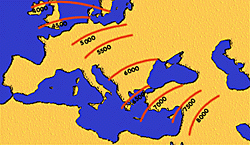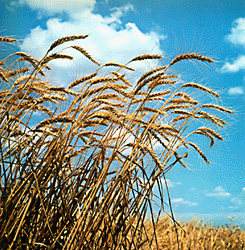
Agriculture, defined as the systematic cultivation of plants, aimed at manipulating and controlling production. The first plants to be cultivated were wild plants which were collected and stored precisely because of their high nutritional value and later fruit followed. However, the transition from plant collection to plant cultivation did not occur in every region of the earth at the same time. Agriculture and animal husbandry characterized the economy of the Neolithic period.

The earliest indications of systematic plant cultivation come from the "Fertile Crescent", a well-watered region of high rainfall in the Near East. Around 9000 BC einkorn and emmer wheat, barley, peas and lentils were cultivated in Palestine (Sultanien) and north Syria, (Mureybetien). After the 7th millenium, the first irrigation canals were constructed in the area, fed by the rivers and springs contributing thus to boosting agricultural production.
 In Asia Minor, the Aegean and the Balkans, the cultivation of the plants
mentioned above occurred in the 7th millenium BC, while in the rest of Europe
in the 6th millenium BC. During the Neolithic Period other types of cereals
(millet, oats, rye) and pappilionaceous (beans, chickpeas) were cultivated
in the Aegean. In northeastern Europe, legumes were introduced later than
cereals.
In Asia Minor, the Aegean and the Balkans, the cultivation of the plants
mentioned above occurred in the 7th millenium BC, while in the rest of Europe
in the 6th millenium BC. During the Neolithic Period other types of cereals
(millet, oats, rye) and pappilionaceous (beans, chickpeas) were cultivated
in the Aegean. In northeastern Europe, legumes were introduced later than
cereals.
The plough played an important role in improving agricultural techniques and consequently in the growth of production. Its use was first recorded in south Mesopotamia (Sumeria) and in Chouristan (Elam) during the first half of the 4th millenium BC. It appeared in Egypt and in Afghanistan during the 3rd millenium. However its usage in the Aegean was not archaeologically confirmed before the 3rd millenium BC.





